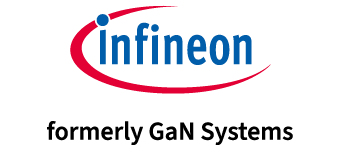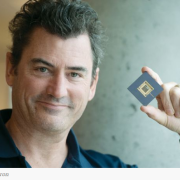The Wow! factor is alive and well
[Originally published in the Ottawa Business Journal]
Kanata North’s pedigree, talent are driving semiconductor success
Kanata North remains on the cutting edge when it comes to the next generation of semiconductor technologies. And why wouldn’t it be? That pedigree is rich and runs deep, all the way back to Bell Northern Research and the old Mitel Networks.
Take 氮化镓系统 (GaN Systems), co-founded eight years ago by CTO John Roberts and President Girvan Patterson. Their resumes, and those of others on the management team, are a who’s who of the big local names in the industry through the ’90s and the 2000s.
That’s no accident. GaN’s potentially game-changing gallium nitride switching and power conversion portfolio was prototyped in the National Research Council of Canada’s own test foundry acquired from Nortel Networks. When it came time to build and expand GaN’s team, the founders had no problem finding a great pool of proven local talent from which to draw.
Heritage of the area
But it isn’t just talent – a corporate culture that fosters open creativity has also carried over from those old days.
“That’s a heritage of the technology sector here that’s still alive and well,” Patterson said.
Sidense Corp. is another thriving player that’s taken advantage of creative culture and talent to grow its global clout in the vast market for embedded non-volatile memory. Its team pedigree includes Chipworks, MOSAID Technologies, Mitel Networks and ATMOS Corp. The company has been snapping up good memory people wherever it can find them.
“If you’re a good circuit designer, you’re going to find employment here,” said Tomasz Wojcicki, VP of Customer Engineering Support.
Even semiconductor multinationals that set up shop in Kanata North are looking for more than just another satellite office. They’re looking for a specialized local team to tackle hard problems no one else can.
Rocket science
Take Taiwan Semiconductor Manufacturing Company Limited. TSMC has grown over the past two decades from a startup in chip manufacturing into the world’s largest independent foundry. Roughly half of the chips found in mobile phones today are manufactured at TSMC.
TSMC’s Ottawa team works on next-generation memory compilers, high-speed interconnects, and perhaps most impressive of all, test systems that are embedded on the chip itself.
“We have here one of the top groups in the world that is working on stuff that no one else has ever seen,” said Cormac O’Connell, Director of TSMC’s Ottawa Design Centre. “We’re literally doing rocket science here.”
KEY FACTS:
– Ottawa’s semiconductor industry (and you might even say Canada’s) began in 1969 when Nortel Networks forerunner Northern Electric created Microsystems International Ltd. (MIL). MIL produced one of the world’s earliest microprocessors, the MIL MF7114, and a series of early microcomputers using this chip.
– MIL was also the place where future serial entrepreneurs Terry Matthews and Michael Cowpland met. The rest, as they say, is history.
– Today’s chips can contain 10 billion devices, where a single atom out of place can have a dramatic impact on performance. What’s on a chip these days needed a whole server room 20 years ago.
– 氮化镓系统 (GaN Systems)’ gallium nitride compound chips replace conventional silicon-based electronic switches that just can’t meet spec for speed, temperature, voltage or current. Efficiency-improving applications range from high-performance auto engines and industrial to making your TV even thinner and getting rid of that brick on your laptop power cord.
– As an independent foundry for hire, TSMC makes chips for fabless electronic companies so they don’t have to spend billions to set up their own foundries. This enables them to build products and compete against the likes of Samsung or Intel – companies that can afford to fabricate their own chips used in their branded system products.
– Sidense Corp. is making waves with what might seem like an old, quaint technology – one-time programmable memory. But that supposed “limitation” provides one significant benefit – a tough layer of added security as more and more devices become connected through the Internet of Things.
Learn more about why Kanata North is fertile ground in which to grow successful companies and find great talent, from semiconductors to software-as-a-service, at www.serioustechliveshere.com



